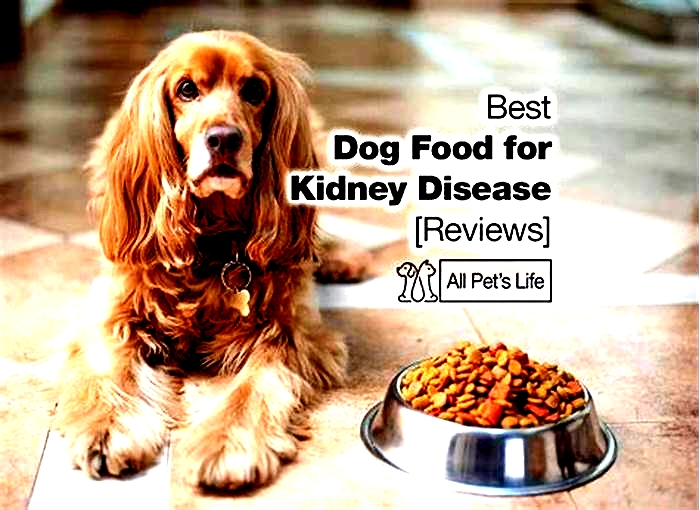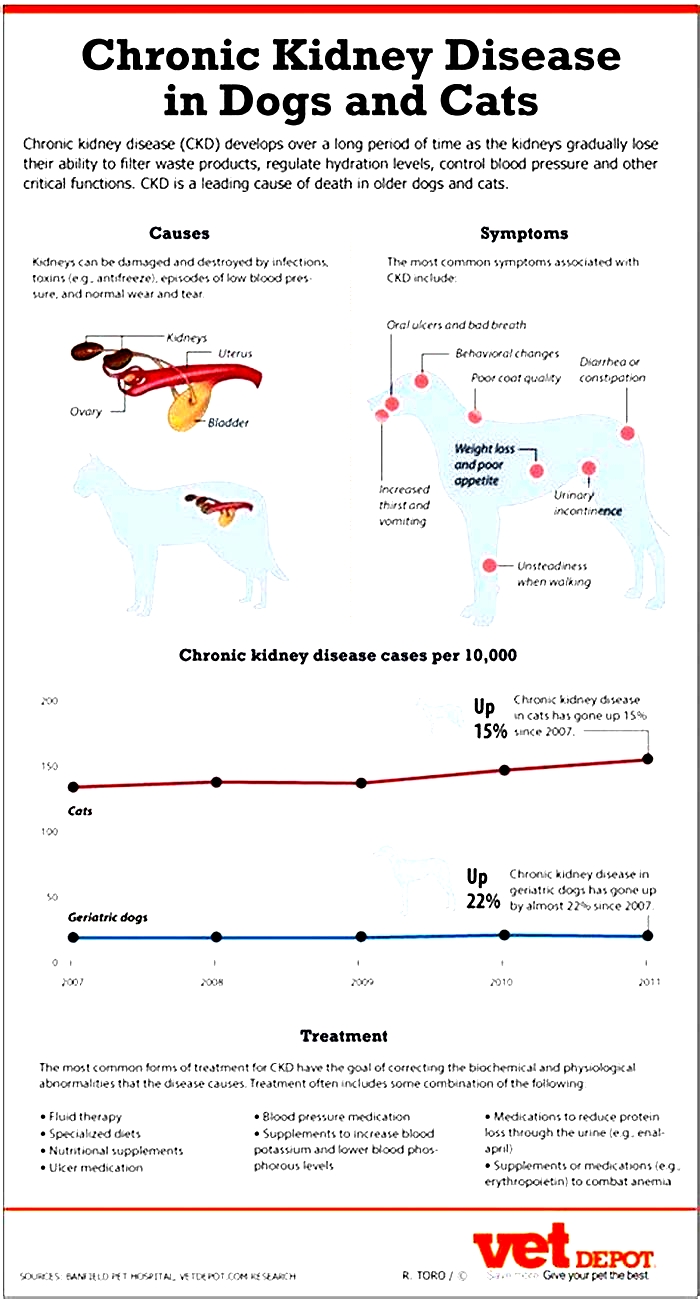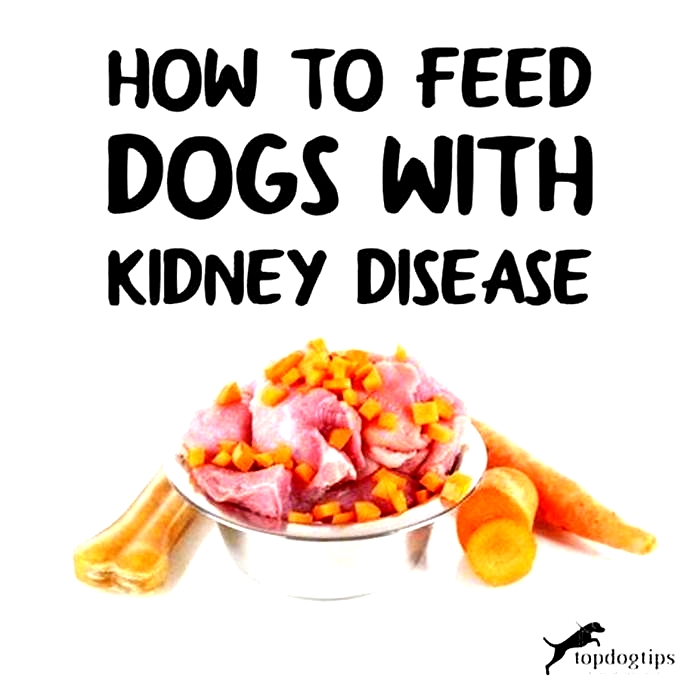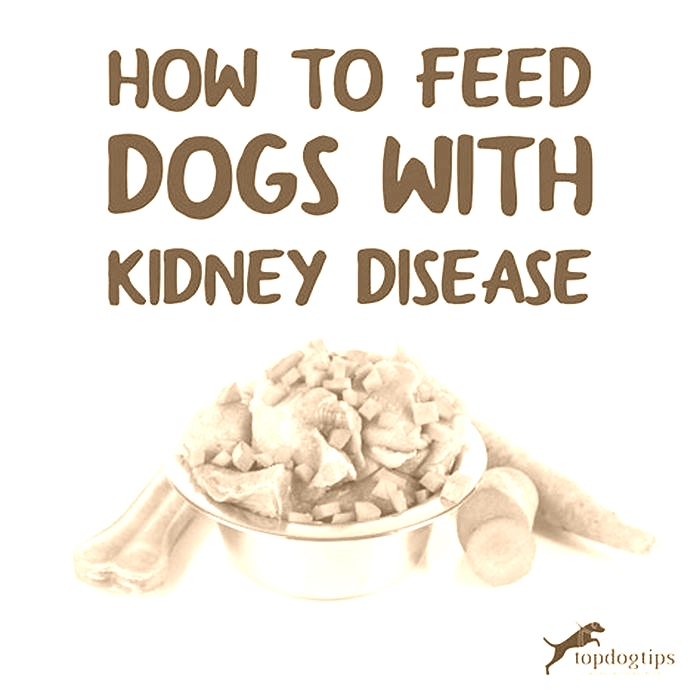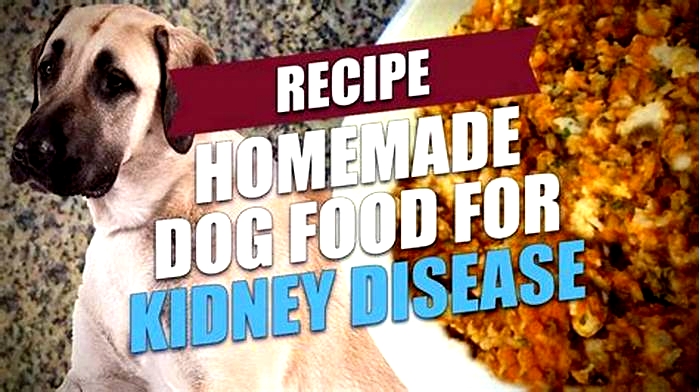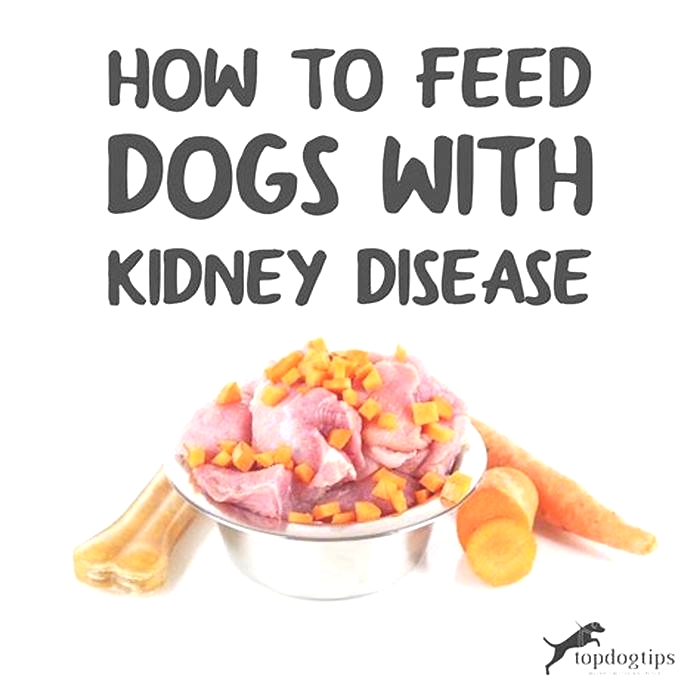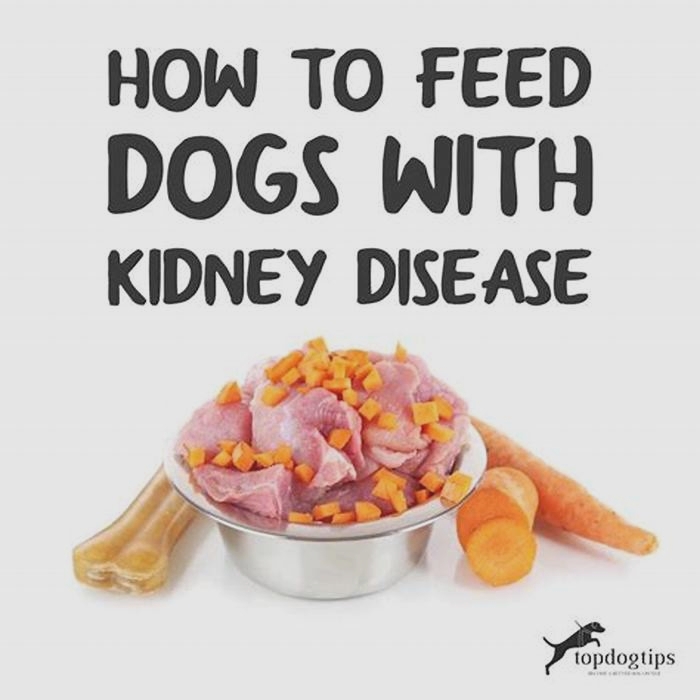can dogs with kidney disease eat chicken
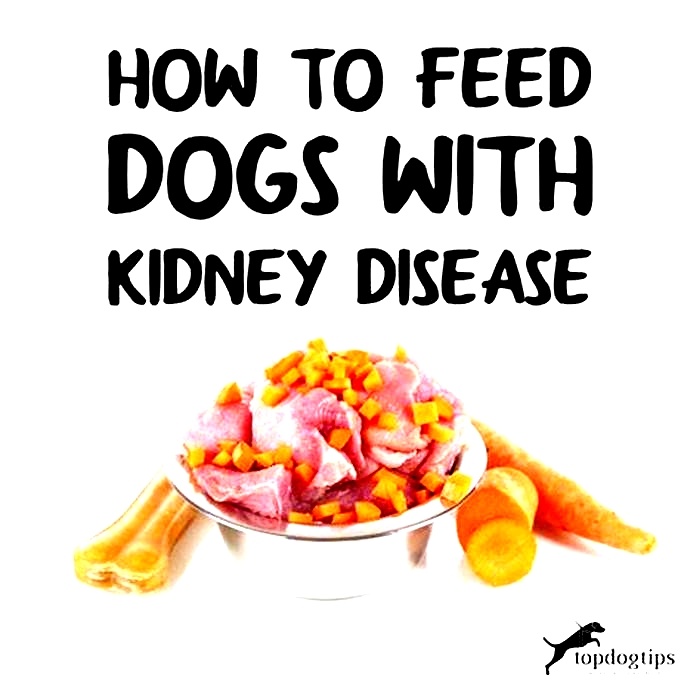
How to Cook Chicken for Dogs With Kidney Disease (Easy Steps & Complete Guide)
Cooking for dogs with kidney disease can be a delicate process, as they often need very lean proteins and have trouble processing protein in general. To cook chicken for dogs with kidney disease, youll want to serve boiled, skinless chicken in low quantities.
But how should you cook chicken for dogs with kidney disease? What does kidney disease mean for your pup? Read on to find out everything you need to know about how to cook chicken for dogs with kidney disease.
The cooking process
Cooking chicken for dogs with kidney disease is all about reducing the fat content of the chicken and taking advantage of how lean of a protein it is. In order to do this, youll want to follow these simple instructions.
First, take the skin and bones out of your chicken. These not only increase the nutrition content (especially of nutrients that dogs with kidney disease cant properly process), but the skin makes the food excessively fatty and the bones pose a choking hazard.
Boil the chicken until its cooked thoroughly. Afterward, drain the water out of the pot and put it on a cutting board. Using two forks, shred the chicken until its easily edible for your dog.
After this, you can serve it in your dogs bowl with whatever sides you decide are best for your dog. Make sure youre serving smaller portion sizes than you did when your dog was healthy, as proteins are difficult for your dog to process when its struggling with kidney disease.
Chicken Recipe
When preparing a meal for a dog with kidney disease that is chicken-based, its important to choose ingredients that are low in phosphorus and high in quality protein. Heres a recipe that you can consider:
Ingredients:
- 4 ounces of boneless, skinless chicken breast or thigh (cooked and chopped)
- 1/4 cup cooked white rice or quinoa
- 1/4 cup steamed or boiled carrots (mashed or finely chopped)
- 1/4 cup steamed or boiled green beans (mashed or finely chopped)
- 1 tablespoon chopped fresh parsley (optional, for added flavor)
- 1 teaspoon fish oil or flaxseed oil (optional, for essential fatty acids)
- 1/4 teaspoon calcium carbonate (consult your veterinarian for the appropriate amount)
- Water for cooking and consistency as needed
Instructions:
Cook the chicken breast or thigh thoroughly by boiling or baking it. Make sure its fully cooked without any seasonings, additives, or bones. Remove any skin and excess fat before chopping it into small, manageable pieces.
Cook the white rice or quinoa according to the package instructions. Ensure its fully cooked and cooled before using it in the recipe.
Steam or boil the carrots and green beans until they are soft. Mash or finely chop them to make them easier for your dog to digest.
In a mixing bowl, combine the chopped chicken, cooked rice or quinoa, mashed carrots, mashed green beans, and chopped parsley (if using). Mix well to evenly distribute the ingredients.
If desired, add fish oil or flaxseed oil to provide essential fatty acids. These oils can help promote healthy skin and coat.
Add the appropriate amount of calcium carbonate to the mixture. The exact amount will depend on the size of your dog and should be determined with guidance from your veterinarian.
Gradually add water to the mixture to achieve the desired consistency. Some dogs prefer a more moist meal, while others prefer it to be drier. Ensure its easy for your dog to eat and digest.
Serve the meal immediately, or portion it into individual servings and refrigerate or freeze for later use. Remember to thaw frozen portions before feeding them to your dog.
Note: Its crucial to consult with your veterinarian before making any dietary changes, especially for dogs with kidney disease. They can provide specific guidance based on your dogs condition and individual needs.
How much chicken to serve dogs with kidney disease
As mentioned above, its quite difficult for dogs with kidney disease to process proteins, even ones as lean and healthy as boiled, skinless chicken. That being said, youll want to cut back on how much chicken youre giving a dog with kidney disease as compared to their healthy counterparts.
1/2 a cup of food for every 25 pounds of body weight is a decent rule of thumb. Of course, dogs that are more active or exercise daily may need more, while older dogs, younger dogs, smaller dogs, or lazier dogs may require less.
How often to serve chicken to dogs with kidney disease
Chicken is a fine meal to serve to dogs daily, even those with kidney disease. Even though they have trouble digesting and processing it, protein is still a core part of their diet. It helps dogs grow muscle that not only helps them with daily activities such as walks, play, and exercise, but is also crucial for basic functions like standing up, walking, sitting down, and other movements.
Health benefits of chicken for dogs with kidney disease
The main health benefit present in chicken for dogs with kidney disease is protein. Since dogs with kidney disease have a hard time digesting and processing protein correctly, its extra important that youre picky with how your dog is getting this essential nutrient.
It is also very low fat and high in vitamins and minerals that help the overall physical health of your dog.
Things to watch out for when serving chicken to dogs with kidney disease
Of course, youll still need to watch out for how the protein is affecting your dog. Kidney failure is very complicated, so some dogs can handle more protein than others while theyre experiencing kidney disease.
To know for sure if chicken, or any diet change, is the right change for your dog, its important to consult your vet. Your vets guidance should be a crucial step in the decision-making process when it comes to what youre looking out for and what youre feeding to your dog.
What is kidney disease?
Kidney disease, renal disease, kidney failure, or renal failure are all terms for when your dogs kidneys arent working properly. Kidneys filter out waste and excrete it as urine, control levels of calcium, control blood pressure, control levels of salt and water in the body, and more! If any of these functions is failing, thats very bad news for your dog.
Kidney disease should be taken extremely seriously and warrants an immediate visit to the vet.
Signs of kidney disease in dogs
If you see any of the following symptoms on a regular basis, your dogs kidneys might be failing. Seek veterinary help as soon as possible.
The signs to look out for are: more frequent urination, more frequent drinking, less frequent urination, urinating during sleep, blood in urine, decreased appetite, diarrhea, vomit, sudden weight loss, and hunched posture.
If you see any one of these signs with frequency or multiple signs, you should call up your vet and ask what the next steps should be!
Alternative proteins for dogs with kidney disease
Chicken isnt the only protein that is fine for dogs with kidney disease.
Other lean proteins are good as well. Eggs (in moderation), as well as dog-friendly fish (such as salmon), are good replacements if chicken wont work for your dog.
Water for dogs with kidney disease
If youre suspecting your dog has kidney disease (or its been confirmed by a veterinarian) you want to have it drinking only distilled or filtered water. This will be easier for the kidneys to process and will help with the treatment and recovery.
Sides to serve with chicken for dogs with kidney disease
Brown rice is the best side to serve with the chicken for dogs with kidney disease. This is because it is very easy for dogs to digest.
Vegetables are also crucial to any dogs diet. Kale, carrots, sweet potatoes, cucumbers, asparagus, and other dog-safe vegetables provide the vitamins and minerals needed to make sure your dog stays as healthy as possible.
Just avoid any vegetables or sides that are high in phosphorus, as these are not easily processed by dogs with failing kidneys.
Feeding schedule of dogs with kidney disease
Dogs with kidney disease seem to do better with more frequent, smaller meals throughout the day. Try four or so smaller meals in a day rather than two large ones and see if your dogs symptoms improve!
Special Note from Sabrina Kong, DVM, on Kidney Disease Diets
The diet for a dog with kidney disease often varies from dog to dog mainly depending on the stage of the disease.
Preparing and cooking your dogs diet when they suffer from kidney disease is the option that offers you more control and guarantees they are receiving the right nutrients they need for their health.
Now, there are some debates in terms of how you should be cooking it, as the word cooking is one of the debates points. During the last few years, the BARF diet has been one of the most accepted ones for feeding dogs in general but also for dogs with kidney disease.
The BARF diet covers the nutrients dogs with kidney disease need:
- high-quality proteins
- omega-3 fatty acids
- fish
- veggies
- low levels of phosphorus and sodium
This diet consists of feeding dogs raw high-quality meats, bones, fruits, veggies, and supplements that include omega-3.
The most important thing to consider when switching your dog to a diet designed for kidney disease is that they still need high-quality proteins that are easy to absorb by the body, thats why I recommend homemade diets instead of storebought foods as those rarely cover the special needs for this kind of condition.
(Source Sabrina Kong, Doctor of Veterinary Medicine, from WeLoveDoodles.com)
What Not To Feed Your Dog With Kidney Disease
Registered veterinarian Dr. Corinne Wigfall, of SpiritDogTraining.com, noted you should avoid raw feeding and feeding treats high in salt such as cheese and meats from the deli such as salami. Be careful feeding commercial dog treats- many are high in sodium and protein which is not ideal for kidney disease.
Do not feed your dog a home cooked diet that is purely meat, or a home cooked diet that you have not run past a veterinarian as you may not have reached the minimum requirements for good health.
My name is Danny Jackson and Im the CEO and Chief Editor behind Petloverguy.com. After spending a decade working with vets and private clients as an animal behavioral and nutritional specialist I co-founded Pet Lover Guy to help other pet parents learn how to interact with, and make the most of the time that they spend with their adopted and rescued best pet friends.Working with Ella, our chihuahua rescue, we seek to help all dog and cat lovers have the happiest life possible.
What Foods Should A Dog With Kidney Disease Eat?
Dogs are susceptible to contracting many diseases that also affect us, since there are very few diseases that can only be diagnosed in humans. As your dog ages, there will come a time when you must pay closer attention to its care and plan some dietary and hygiene measures. This done with the end goal of preventing common diseases among older dogs and improving your dog's quality of life. If your dog suffers from kidney problems you need to offer it a specific dog with renal failure diet.
Kidney problems are common in dogs, making it very important to be aware of the symptoms of kidney disease in dogs and know how to ease it. This is why in this AnimalWised article we'll go over the best food for dogs with kidney failure problems.
Dogs with kidney disease
Like us humans, a dog's kidney aim to filter out the body's waste through urine. Kidneys are also responsible for balancing out the body's blood pressure and electrolytes. In addition, a dog's kidneys aim to:
- Promote red blood cell production.
- Maintain salt and water concentrations.
- Help a dog's calcium metabolism.
- Keep up phosphorous levels.
With all of these responsibilities and considering the necessary function of a dog's kidneys, if they fail it can result in severe illness.
A dog can suffer from acute or chronic kidney failure. Acute kidney failure can often be treated. Chronic kidney failure in dogs, however, only shows symptoms after a period of time and is more difficult to diagnose. For more, we recommend reading our article on kidney failure in dogs: symptoms and treatment.
Dogs with kidney disease: symptoms
In order to offer your dog with kidney failure the adequate diet, it is equally important to be aware of the symptoms of kidney failure in dogs. Dogs with kidney disease symptoms include:
- Polyuria: A dog urinating more is one of the most common symptoms of kidney disease, but it can also be the case that the dog stops urinating completely (anuria).
- Poldipsia: to compensate for the elimination of fluids, the dog drinks more water.
- Vomiting and diarrhea, sometimes even with hemorrhage.
- Blindness.
- Dehydration.
- Thinning and, in general, poor appearance, poor body condition and muscle weakness.
- Anorexia.
- Ulcers in the oral cavity and/or bad smell.
- There may also be ascites (fluid accumulation in the abdomen) and edema (fluid in the extremities).
- State of shock and, in the last stages, coma.
If your dog is suffering kidney damage, it's important to be able to spot whether it is acute or chronic. The symptoms vary depending on whether kidney failure is acute or chronic:
Symptoms of acute kidney failure:
- Complete loss of appetite
- Lethargy
- Vomiting
- Reduction in urine production
- Disorientation
- Uncoordinated movements
- Physical weakness
Symptoms of chronic kidney failure:
- Reduction in urine production
- No urine
- Bloody urine
- Poor quality fur
- Vomiting
- Diarrhea
- Hunched posture
- Bad breath
- Mouth sores
- Dehydration
- Weakness
- Swelling as a result of fluid retention
Kidney failure is a serious condition in dogs since it affects a vital organ, and as such it requires urgent treatment. This treatment will include changes in your pet's normal diet.
Kidney failure in dogs: diet
As we already mentioned, kidney failure in dogs can be acute or chronic. The acute form can carry a high risk of mortality, although it is reversible. Chronic kidney failure, however, entails irreversible kidney tissue damage.
Under normal conditions, the toxins that circulate in the blood are dissolved in water through the kidney, and are then duly filtered and subsequently excreted via urine. However, with kidney failure the kidney requires a greater quantity of water in order to excrete the same amount of toxins. There comes a point in which maximum hydration isn't sufficient for the kidney to withstand the normal workload, and the toxins in the bloodstream increase.
Many of these toxins come from the environment, while others come from the metabolism of particular nutrients such as proteins; this process generates ammonia, a toxic substance that needs to be converted into urea in order to be excreted through urine.
As always, food is one of the most influential factors for health. Diet is particularly important for dogs with kidney failure, so you should avoid certain foods and make sure that your friends receives enough calories for to maintain its body weight.
Dogs with kidney disease: diet
When giving food to dogs suffering with kidney failure, the main aim is to reduce the workload of the kidneys. This is because now a dog's kidneys are no longer able to adequately filter all toxins and keep the dog at a healthy weight. By doing this one aims to prevent a state of malnutrition in the dog.
A dog with renal failure diet should meet the following requirements:
- It should be low in sodium and phosphorus.
- The diet should contain proteins of high biological value - rich in essential amino acids - but in moderate portions.
- Hydration should be of optimum importance. As such, the dog should always have fresh and clean water available, and it will have a preference for wet food.
A diet that meets these principles can be given both through dog food - or homemade dog food, with much debate existing over which is the best method.
Dog kidney disease diet: homemade
There are specific dog foods that are perfectly suited to the nutritional requirements of dogs with kidney failure. However, some experts believe that the best food in such cases is that made at home, and that dog food should only be offered as a supplement.
It's important that you seek advise from the vet. A professional will be able to advise you on how to give your dog the best food for kidney failure whilst taking into account your dog's individual case.
If the decision is finally made to feed your dog with renal failure homemade diet, you should avoid incorporating these below mentioned foods; owing to their high levels of phosphorus. Don't give a dog with kidney failure:
- Milk and dairy products
- Fish
- Pig liver
- Chocolate
- Walnuts
- Legumes
- Eggs
- York ham
- Bacon
- Sausage
On the other hand, the following foods should be included in your dog with kidney disease homemade diet:
- Boiled rice
- Chicken
- Carrots
- Very lean beef
- Peas
In any case, it will be the vet or canine nutritionist who will you exactly how to provide your dog with all the nutritional requirements. This can be done through dog kidney failure diet recipe, traditional store-bought dog food or a home-made dog food diet, adapted to your dog's specific case[2].
For more, we recommend reading our article on: homemade diet for dogs with kidney failure.
Dog with kidney disease not eating
If your dog is suffering from kidney disease, has been offered the above dog kidney failure diet recipe and is still not eating: consult a veterinarian immediately. A veterinarian dealing with a dog with kidney disease not eating might provide your dog with an appetite stimulant and/or fluids.
Dog with kidney disease life expectancy
Kidney disease in dogs is more common in older dogs. The life expectancy for a dog with kidney disease will depend on whether the kidney disease is acute or chronic. Additionally, life expectancy for dogs with kidney failure will depend on the dog's specific case, breed, size and treatment. Offering a dog with kidney failure the adequate diet will not cure the problem, but it can help your dog live a more comfortable life. For more on your dog with kidney disease life expectancy, consult your veterinarian.
If you want to read similar articles to What Foods Should A Dog With Kidney Disease Eat?, we recommend you visit our Homemade diets category.
References

